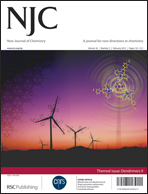Dendrimers antiamyloidogenic potential in neurodegenerative diseases†
Abstract
Dendrimers have been shown to be capable of interfering in vitro with the formation of the amyloid fibrillar structures typically related to the onset and development of the so-called conformational diseases, such as Alzheimer's disease and prion diseases. This makes dendrimers potentially useful as compounds that could prevent or inhibit the action of the cytotoxic amyloid species. In the present paper we summarise the works on the interaction of dendrimers with amyloid

- This article is part of the themed collection: Dendrimers II

 Please wait while we load your content...
Please wait while we load your content...